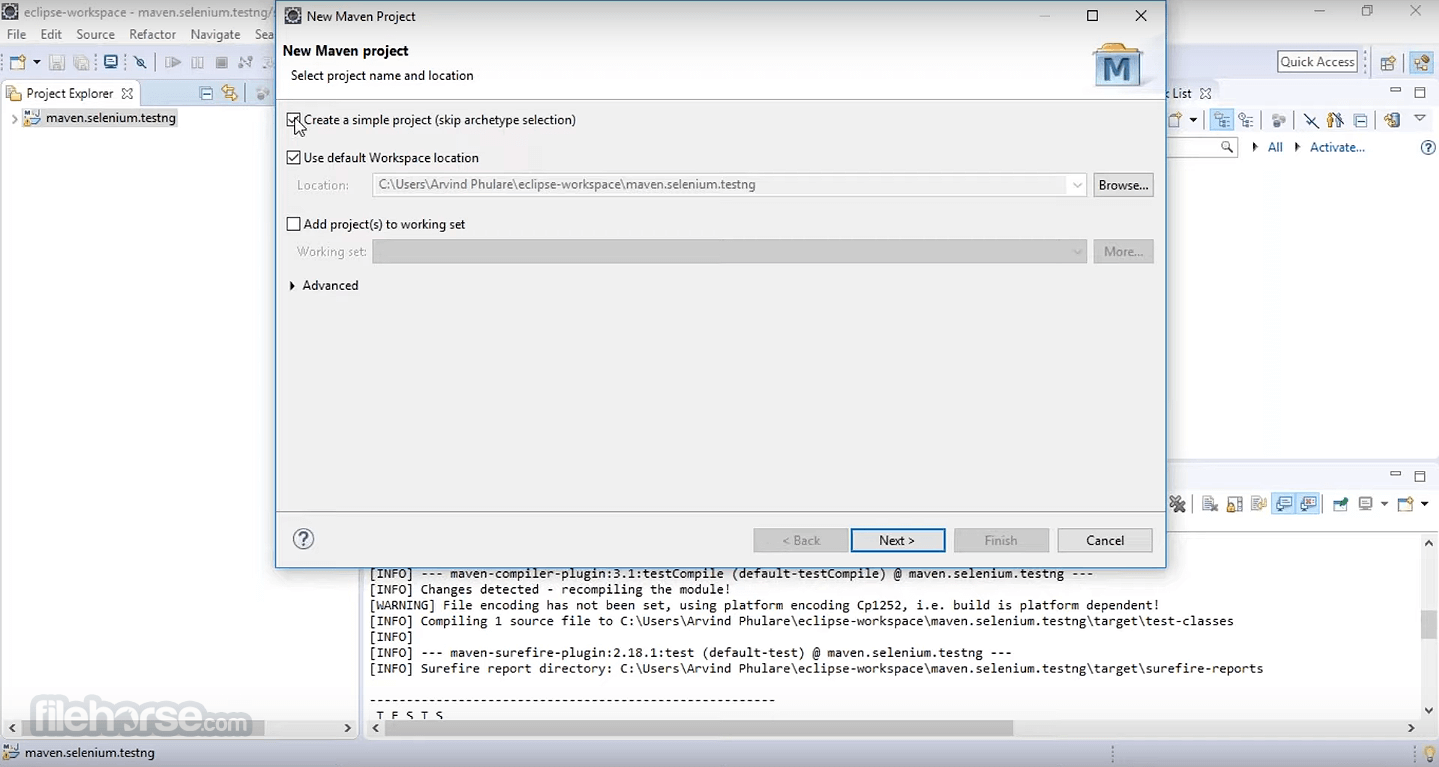-
Latest Version
Apache Maven 3.9.11 LATEST
-
Review by
-
Operating System
Windows 7 / Windows 8 / Windows 10 / Windows 11
-
User Rating
Click to vote -
Author / Product
-
Filename
apache-maven-3.9.11-bin.zip
Developed by the Apache Software Foundation, Maven streamlines project development by managing dependencies, simplifying builds, and enforcing a structured project workflow.
Apache Maven follows a model-based approach, leveraging conventions over configuration to reduce the need for complex build scripts.

Key Features
Project Object Model (POM): Centralized configuration through an XML-based POM file.
Dependency Management: Automatically downloads and manages libraries and plugins from Maven repositories.
Build Lifecycle: Predefined build phases for compiling, testing, packaging, and deploying applications.
Plugin System: Extensible architecture with various plugins for integration with testing frameworks, deployment tools, and documentation generators.
Multi-Module Project Support: Facilitates handling complex projects with multiple modules.
Integration with IDEs: Compatible with Eclipse, IntelliJ IDEA, and NetBeans.
Continuous Integration (CI) Support: Easily integrates with Jenkins, GitHub Actions, and other CI/CD tools.
User Interface
Maven primarily operates as a command-line tool, making it lightweight and efficient.

While there is no graphical interface, popular IDEs like Eclipse and IntelliJ IDEA provide Maven integration, allowing users to manage builds and dependencies with a graphical UI.
Installation and Setup
Download: Get the latest Maven binary package from the official website.
Extract Files: Unzip the downloaded archive to a directory (e.g., C:\Program Files\Apache Maven).
Set Environment Variables:
Add MAVEN_HOME to the system environment variables.
Update the PATH variable to include Maven’s bin directory.
Verify Installation:
Open Command Prompt and type mvn -version to check if Maven is installed successfully.
How to Use
Create a New Project: Run mvn archetype:generate to create a Maven project with a predefined template.
Build a Project: Use mvn clean install to compile, test, and package the application.

Manage Dependencies: Modify the pom.xml file to add new dependencies, which Maven will automatically fetch from online repositories.
Run Unit Tests: Execute mvn test to run all unit tests within the project.
Deploy Artifacts: Use mvn deploy to publish the project to a repository.
FAQs
What programming languages does Apache Maven support?
Maven is primarily designed for Java but can be adapted for other languages with custom plugins.
Can Maven work offline?
Yes, by using the mvn -o flag, but all required dependencies must be downloaded beforehand.
How does Maven handle dependency conflicts?
Maven resolves conflicts using the nearest dependency version rule and allows developers to override versions in the POM file.
What is the difference between Maven and Gradle?
Maven is XML-based with a convention-over-configuration approach, whereas Gradle uses a more flexible Groovy or Kotlin DSL.
Does Maven support non-Java projects?
Yes, but it requires additional configuration and plugins for languages like Python, C++, and JavaScript.
Alternatives
Gradle – A modern build automation tool with Groovy/Kotlin DSL.
Pricing
Apache Maven is completely free and open-source under the Apache License 2.0.
System Requirements
- OS: Windows 7, 8, 10, 11
- Java Development Kit (JDK): Java 8 or higher
- Memory: At least 512MB RAM (1GB recommended)
- Storage: 100MB of disk space
- Simplifies dependency management and project builds
- Strong community support and extensive documentation
- Highly customizable via plugins
- Excellent integration with Java development environments
- Automates the entire build lifecycle
- XML-based configuration can be verbose
- Slower compared to modern alternatives like Gradle
- Steep learning curve for beginners
- Limited support for non-Java projects
- Dependency resolution issues in large projects
Apache Maven remains one of the most reliable and widely used build automation tools for Java developers. Its structured approach, extensive plugin ecosystem, and strong integration with IDEs make it a top choice for managing software projects.
While its XML-based configuration might seem rigid compared to newer alternatives, its stability and convention-driven build lifecycle make it a powerful tool for both small and enterprise-level development teams.
Note: Requires Java Development Kit.
What's new in this version:
New features and improvements:
- Augment version range resolution used repositories
Fixed:
- Deduplicate filtered dependency graph
- Move ensure in boundaries of project lock
Maintenance:
- [MNGSITE-393] - remove references to Maven 2
- Update CONTRIBUTING after GitHub issues enabled
- Enable Github Issues (3.9.x)
- [MNG-8763] - Remove name from site bannerLeft
Build:
- Pin GitHub action versions by hash
- Build the project by JDK 21 as default
- Use Maven 3.9.10 for build on GitHub
Dependency updates:
- Bump resolverVersion from 1.9.23 to 1.9.24
- Bump xmlunitVersion from 2.10.2 to 2.10.3
- Bump org.apache.maven:maven-parent from 44 to 45
- Bump org.codehaus.mojo:build-helper-maven-plugin from 3.6.0 to 3.6.1
 OperaOpera 123.0 Build 5669.47 (64-bit)
OperaOpera 123.0 Build 5669.47 (64-bit) MalwarebytesMalwarebytes Premium 5.4.3
MalwarebytesMalwarebytes Premium 5.4.3 PhotoshopAdobe Photoshop CC 2026 27.0 (64-bit)
PhotoshopAdobe Photoshop CC 2026 27.0 (64-bit) ExpressVPNExpressVPN - Super Fast, Safe & Private
ExpressVPNExpressVPN - Super Fast, Safe & Private OKXOKX - Buy Bitcoin or Ethereum
OKXOKX - Buy Bitcoin or Ethereum Premiere ProAdobe Premiere Pro CC 2025 25.5
Premiere ProAdobe Premiere Pro CC 2025 25.5 PC RepairPC Repair Tool 2025
PC RepairPC Repair Tool 2025 Hero WarsHero Wars - Online Action Game
Hero WarsHero Wars - Online Action Game TradingViewTradingView - Trusted by 60 Million Traders
TradingViewTradingView - Trusted by 60 Million Traders Edraw AIEdraw AI - AI-Powered Visual Collaboration
Edraw AIEdraw AI - AI-Powered Visual Collaboration







Comments and User Reviews